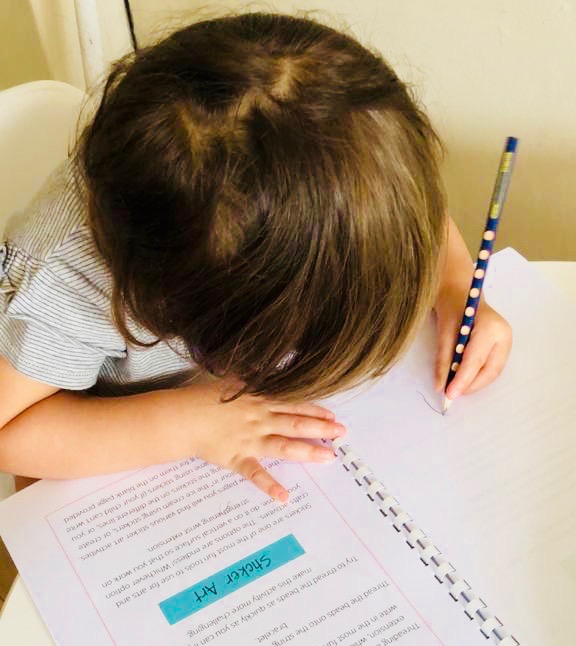Just because you’re left-handed doesn’t mean you have to be left behind! As a qualified Occupational Therapist and lefty myself, I can help you and your child be the best lefty they can be! That’s why I designed the Lefty Kit!
It’s a total myth that being left-handed means that you will automatically struggle with writing and cutting tasks and that it’s a given that a lefty’s writing will look and be awkward. There is really little to no difference in skills whether you’re left-handed or right-handed. It’s just that lefties are the minority and live in a right-handed world and therefore need to learn to adapt to it. They also need to be taught the correct left-handed principles as early as possible.
Think about it this way – if you are right-handed, but someone taught you the writing and cutting principles of a lefty, how awkward and difficult would these tasks be for you?! Try to cut with a pair of left-handed scissors if you are right-handed – it will feel uncomfortable and your cutting accuracy will not be as good. It’s the same concept with lefties. If taught writing and cutting principles correctly from the get-go, a left-handed child will look no different to a right-handed child when working in class (other than the fact that they are using their left hand!).
The Lefty Kit is designed to assist left-handed children to develop functional cutting and writing skills. As a left-handed occupational therapist, I created The Lefty Kit to assist parents, teachers and therapists navigate little lefties through this right-handed world.
The Lefty Kit breaks down common issues that left-handed children encounter, and removes all the anxiety and stress often associated with it. ‘The Guide to Left Handedness’ includes misconceptions about left-handedness and then breaks down writing and cutting principles in a way that is simple, easy to understand and fun for children! It shows how the pencil should be held and how the hand, arm and page should be positioned, meaning that you can easily guide your child to write in the best way.
Each kit includes:
- The Guide to Left Handedness
- 13 Activities
- Writing Mat
- FREE Delivery Nationwide

Included in the Lefty Kit are 13 activities that can be done to develop, practice and apply the important aspects of left-handedness in a fun way! One of the activities included in the Lefty Kit is Pompom Flicks. This game requires pompoms (included in the kit) as well as goals (e.g. tape, tins, toilet rolls, etc.). Your child needs to flick the pompoms and try to score a goal by using their thumb and index finger or thumb and middle finger. This flicking movement places the wrist in an extended position. Wrist extension is therefore strengthened during this activity and will assist your little lefty in positioning their hand correctly when writing and will prevent them from developing a hook grasp!

Order your Lefty Kit here for only R485!
Occupational therapists can assist left-handed children by guiding them, teaching them the principles of left-handedness and helping them practice the application of these principles. They can also assist parents by educating them so that parents can assist their child at home, but can also advocate for them in this right-handed world.

What is Occupational Therapy?
Occupational Therapy (OT) is a client-centered health profession concerned with promoting health and well being through occupation. The primary goal of OT is to enable people to participate in the activities of everyday life. Occupational therapists achieve this outcome by working with people and communities to enhance their ability to engage in the occupations they want to, need to, or are expected to do. This outcome may also be achieved by modifying the occupation or environment to better support their occupational engagement. (https://wfot.org/about/about-occupational-therapy)
How OT can help children
A child’s life is also made up of occupations and daily activities. These include playing, learning, sleeping and resting, interacting with others, getting dressed, etc. OT’s can help and support children of all ages, from new-borns to teenagers. OT’s work with children and their families to help them succeed in activities of daily living by incorporating the occupations that are most important to them in the intervention process. The goal of OT is to help children become independent in all areas of life, for example, achieving age appropriate developmental milestones, interacting socially, play skills, gross motor and fine motor skills, sensory integration, coping at school, behaviour, etc.
For more Lefty content, follow me on Instagram and Facebook @steadystridesot
- Let’s Talk Left-Handedness - May 4, 2021




